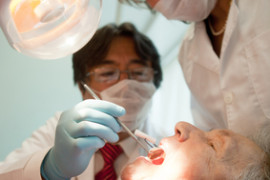What affects 8% of the Western world, is the number one cause of emergency surgeries, and might be influenced by oral bacteria?
We’re talking about appendicitis. Researchers are helping pinpoint the mechanisms behind appendicitis and the more-dangerous perforated appendix, and they’re finding common elements between gum disease and appendicitis.
The study, which was published in the Journal of PLoS One, identifies bacteria from the genera Porphyromonas, Fusobacteria, and Prevotella—among others—as significantly more common in diseased and perforated appendices than in normal, healthy ones.
Bacteria from these genera are major players in the development and progression of periodontal disease and are known to play a significant role in systemic inflammation and disease. Prevotella intermedia is a common cause of ulcerative gingivitis and abscesses. Porphyromonas gingivalis has been found in the synovial fluid of rheumatoid arthritis patients, the atheromas of heart attack patients, and the brain samples of Alzheimer’s patients. Fusobacterium nucleatum has been identified as a player in the carcinogenesis of colorectal cancer, as well as pre-term births and stillbirths.
And with this new research, we find that they may also contribute to the development of appendicitis.
Researchers concluded:
“Taxa with altered abundance in diseased and severely diseased (perforated) samples may contribute to appendicitis pathogenesis, and may provide microbial signatures in the rectum useful for guiding both treatment and diagnosis of appendicitis.”
With ongoing research confirming that these pathogens travel through the body, causing inflammation, infection, and other complications, it’s really no surprise that these bacteria are found in such high numbers in people with appendicitis. And with over 75,000 appendectomies performed each year in the United States alone, there is certainly cause for more research into the ways in which these bacteria affect the appendix.



